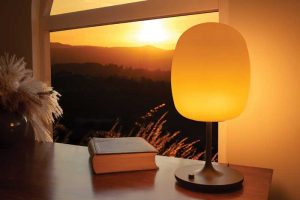
By Robert Soler
A specifier plays a critical role in ensuring buildings are designed and constructed to meet and exceed the needs of the people using those spaces. Many design elements go into every stage of the construction process, from initial drawings to materials selection, but there is one building design aspect often overlooked: the impact of indoor lighting.
When thinking about lighting a room, most people immediately think about brightness and ambiance: can occupants see well inside? Is it the right atmosphere for whatever activities are happening in this room? Does the lighting highlight the most important areas?
What is often overlooked when designing a building is the impact of lighting on the health and wellness of the occupants, regardless of whether it is a commercial building or a residential structure. Research shows that light is vital for health and wellbeing and is linked to the body’s natural rhythm.1
Functional lighting reimagined
Having appropriate lighting inside a building directly influences the productivity, mood, sleep patterns, etc., of its inhabitants. This information is imperative for businesses who want to ensure their employees are happy and efficient, and even businesses such as hotels and travel companies who want to ensure their visitors have a comfortable experience. The use cases for wellness lighting are endless.
While typically functional lighting design revolves around providing the mandatory illumination needed for everyday activities, a case should be made for elevating the understanding of what “mandatory” illumination is. It is more than just being able to see well inside a room—occupant health should be a necessary part of the decision.
Science-backed results
People might notice they are happier on sunny days than they are on cloudy, stormy days and this is, in some cases, due to the amount of light they are getting. Beyond improving moods, the amount of light a person gets changes them on a biological level.

In a 2022 study published in PLOS Biology, researchers found light exposure is directly connected to more than just vision and productivity; it is also directly correlated to sleep health and circadian rhythms, cognitive function, and mental health wellness.2 The data states light not only helps manage symptoms of many of these aspects of health but is also related to the diagnosis itself. If someone is experiencing changes in their health, increasing exposure to light may be the solution, or at least part of it.
In fact, light is important for wellbeing at all stages of life, from infancy to adulthood. A fussy baby may need brighter lighting in their nursery to improve their mood and research indicates that patients with dementia have seen improvement in their memory in homes with more dynamic lighting.3




